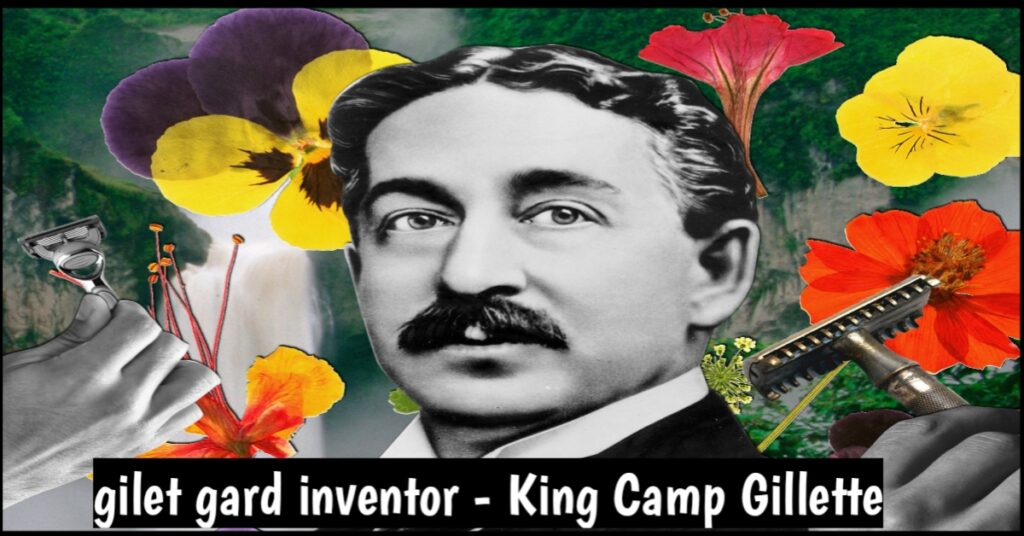Gillette Guard Success Story In India
Perhaps if someone else had been in place of King Camp Gillette, he would not have tried again. King Camp Gillette achieved success through his tireless efforts and hard work.
Motivation for you by Gillette Guard, Gillette Guard came to India about three years ago and once sold, no one bought it again.
Gillette Guard is not sold in India, yet King Camp Gillette
Didn’t give up. Understood and analyzed that Gillette Guard is being sold all over the world but why it is not being sold in India. When analyzed in depth, it was found that the hair of Indians is thick, long and dense.
Gillette failed with its initial version of Vector in 2002.
Vector was launched but did not perform well. Gillette Did Market Research, What Went Wrong? Here’s the catch – they didn’t do market research in India!.
.
Related more article – Gillette Guard Razor -To Prevent Nicks And Cuts
.
Similarly, we also have to analyze for our work, we have to get accurate information for your goal. To achieve your goal you have to learn from the best.
Where was Gillette Guard first established in India?
Gillette India Limited 1984 – The company was established on 9 February in Rajasthan. The company is jointly owned by House of Poddar Enterprises (HOPE) and Gillette Company, USA. (Gillette). The company manufactures stainless steel razor blades.
The Gillette Guard, a low-cost razor designed for India and other emerging markets, took 18 months to develop.
This is how the gilet guard was created
After an extensive search, Gillette found MIT-trained engineer William Emery Nickerson, who envisioned creating a thin, sharp steel blade.
Gillette’s invention was a thin, inexpensive, disposable blade of stamped steel.. However, the Gillette safety razor company adopted the business model from its competitors.
Gillette’s innovative sales strategy—he sold the razors for a loss and made his profits on the blades—helped make the product a success.
While working as a salesman for the Crown Cork and Seal Company in the 1890s, Gillette observed bottle caps, with cork seals that he sold, being thrown away after the bottle was opened. This made him aware of the importance of basing a business on a product that was used a few times and then discarded.
Men shaved with straight razors that needed to be sharpened every day using a leather strip. Since existing, relatively expensive razor blades quickly become blunt and require constant sharpening, a razor whose blade can be thrown away when blunted would meet a real need and would potentially be profitable.
Safety razors were developed in the mid-19th century, but forged blades were still used. In the 1870s, Camphey Brothers introduced a type of razor along similar lines.
Gillette improved upon these earlier safety-razor designs and introduced a high-profit-margin stamped razor blade made from carbon steel sheet. Gillette’s razor sold for $5 (equivalent to $163.00 in 2022) – half the average working man’s weekly wage – yet millions were sold.
The most difficult part of the development was engineering the blade, as the thin, cheap steel was difficult to work and sharpen. This accounts for the delay between the initial idea and the introduction of the product. Steven Porter, a machinist who worked with Gillette, used Gillette’s drawings to create the first disposable razor blade that worked.
William Emery Nickerson, an expert machinist and partner of Gillette, altered the original model, improving the handle and frame so that it could better support the thin steel blade. Nickerson designed machinery to mass-produce the blades, and he received a patent for hardening and sharpening the blades. (Nickerson was later elected to Gillette’s board of directors.)
To sell the product, Gillette founded the American Safety Razor Company on September 28, 1901 (the company was renamed the Gillette Safety Razor Company in July 1902). Gillette obtained a trademark registration (0056921) for its image and signature on the packaging. Production began in 1903, when they sold a total of 51 razors and 168 blades.
Sales and distribution were handled by a separate company, Townsend and Hunt, which was absorbed by the parent company in 1906 for US$300,000.
Razor sales reached 450,000 units in 1915 and blade sales exceeded 70 million units.
Gillette vetoed a plan to sell patent rights in Europe, believing that Europe would ultimately provide a much larger market. Gillette and John Joyce, a fellow director, fought for control of the company.
Gillette was eventually sold to Joyce, but his name remained on the brand. In the 1920s, as the patent expired, the Gillette safety razor company emphasized research to design better models, realizing that even the slightest improvement would inspire men to adopt it.
Read more >>
Gemini AI Tool Full Information






